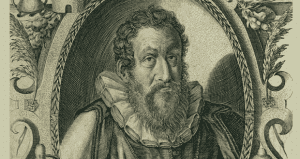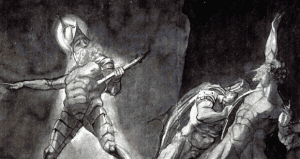
William Byrd’s “Battle” and the Earl of Oxford
by Sally Mosher Originally published in the 1998 edition of The Oxfordian Among close to three hundred pieces contained in the most famous keyboard manuscript
Exploring the evidence that the works of Shakespeare were written by Edward de Vere, 17th Earl of Oxford

by Sally Mosher Originally published in the 1998 edition of The Oxfordian Among close to three hundred pieces contained in the most famous keyboard manuscript

by Frank Davis Originally published in the 2009 issue of The Oxfordian Few tracts from Shakespeare’s time have generated more study, comment and controversy than

by James Fitzgerald You can always get a little more literature if you are willing to go a little closer into what has been left

Editorial Note: This essay was originally published on the SOF website on February 21, 2011. It has been revised and updated and may be cited

Noted lawyer Sir George Greenwood claimed Shakespeare’s plays and poems “supply ample evidence that their author . . . had a very extensive and accurate knowledge of law.” This essay surveys arguments for and against supposing a legal education for Shakespeare.

by Paul H. Altrocchi, M.D. I will find where truth is hid, though it were hid indeed within the center. Hamlet: Act II Scene 2

by Eric Lewin Altschuler and William Jansen Some years ago, in an article in Notes & Queries, Philippa Sheppard noted strong similarities between the speech

by Roger Stritmatter We believe that Shakespeare, whose investment in courtly diction was considerable, can be analyzed as a writer who felt, in the course

Michael Delahoyde Originally published in THE OXFORDIAN, Volume IX 2006, pages 51–65 To this well-painted piece is Lucrece come, To find a face where all distress is

by Richard F. Whalen This article appeared in a slightly different form in the 2003 issue of The Oxfordian Awake! Awake! Ring the alarum-bell:—murder and

by Andrew Hannas Reprinted by permission of the author from The Shakespeare Oxford Society Newsletter, Winter 1993, Volume 29, No. 1B In attempts to explain

Some characteristics of the author “Shakespeare” revealed in the poems and plays, identified by J. Thomas Looney in “Shakespeare” Identified in Edward de Vere, the

Why are there so many Shakespeare authorship candidates? For many people, an understandable question arises, even if one does begin to doubt the Stratford story:

The so-called “Ashbourne Shakespeare” portrait surfaced in the 19th century at the Ashbourne Free school in Derbyshire. Charles Wisner Barrell, in a controversial 1940 Scientific

by Thomas Regnier. Shakespeare’s frequent use of the law is well documented. Whether his legal terms are always used correctly has been a matter of dispute. I examine how accurately legal terms are used in the plays, and how accurately and deeply legal issues are developed.

by Ramon Jiménez This article appeared in a slightly different form in the 2004 issue of The Oxfordian The anonymous history play, The True Tragedy
| Cookie | Duration | Description |
|---|---|---|
| cookielawinfo-checkbox-analytics | 11 months | This cookie is set by GDPR Cookie Consent plugin. The cookie is used to store the user consent for the cookies in the category "Analytics". |
| cookielawinfo-checkbox-functional | 11 months | The cookie is set by GDPR cookie consent to record the user consent for the cookies in the category "Functional". |
| cookielawinfo-checkbox-necessary | 11 months | This cookie is set by GDPR Cookie Consent plugin. The cookies is used to store the user consent for the cookies in the category "Necessary". |
| cookielawinfo-checkbox-others | 11 months | This cookie is set by GDPR Cookie Consent plugin. The cookie is used to store the user consent for the cookies in the category "Other. |
| cookielawinfo-checkbox-performance | 11 months | This cookie is set by GDPR Cookie Consent plugin. The cookie is used to store the user consent for the cookies in the category "Performance". |
| viewed_cookie_policy | 11 months | The cookie is set by the GDPR Cookie Consent plugin and is used to store whether or not user has consented to the use of cookies. It does not store any personal data. |